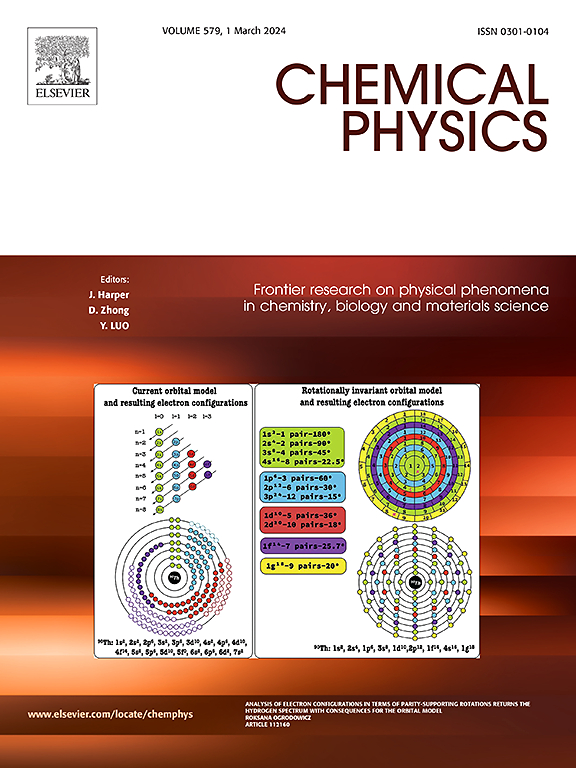Can different counter ions and their concentration modify the structural characteristics of aqueous solutions of uranyl ions? Atomistic insights from molecular dynamics simulations
IF 2
3区 化学
Q4 CHEMISTRY, PHYSICAL
引用次数: 0
Abstract
Extensive atomistic molecular dynamics simulation results suggest that probability of counter ion occupying first solvation shell of uranyl ion depends both on its nature and concentration. In general, uranyl-counter ion complexes with pentagonal bi-pyramidal structure with five ligands in the equatorial plane of the linear UO22+ ion are observed. In case of nitrate ion, pure aqua complexes at lower concentrations and mixed mono-nitro aqua complexes are observed at higher concentrations, whereas in case of sulphate and carbonate ions, no pure aqua complexes are observed. The NO3− and SO42− ions act as unidentate, but CO32− acts both as uni- and bi-dentate ligand. In addition, polynuclear uranium complexes with bridging SO42− and CO32− ligands are observed. Relative strength of binding of counter ions with uranyl ion from PMF calculations follows the order CO32− > SO42− > NO3− with the contact pair free energies of about −29.0, −14.0 and −1.1 kcal/mol respectively.

求助全文
约1分钟内获得全文
求助全文
来源期刊

Chemical Physics
化学-物理:原子、分子和化学物理
CiteScore
4.60
自引率
4.30%
发文量
278
审稿时长
39 days
期刊介绍:
Chemical Physics publishes experimental and theoretical papers on all aspects of chemical physics. In this journal, experiments are related to theory, and in turn theoretical papers are related to present or future experiments. Subjects covered include: spectroscopy and molecular structure, interacting systems, relaxation phenomena, biological systems, materials, fundamental problems in molecular reactivity, molecular quantum theory and statistical mechanics. Computational chemistry studies of routine character are not appropriate for this journal.
 求助内容:
求助内容: 应助结果提醒方式:
应助结果提醒方式:


